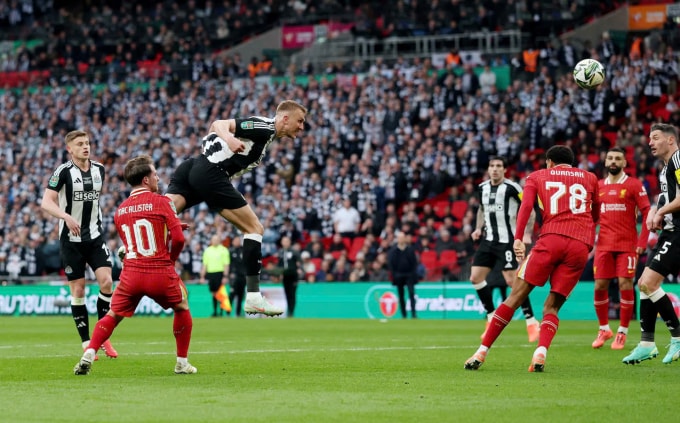Howay the lads!
During my life, I’ve seen many fabulous players and managers fail to win at Newcastle United: Gazza, Quinn and McGhee, Kelly and Peacock, Beardsley, Cole, Keegan, Big Les and Shearer, Sir Bobby. All legends to us all. But Burn, Isak, and Howe have simply done what I genuinely thought was impossible. While supporting the Toon, I’ve lost my dad, my sister, and my brother. I’ve got married and had two children. I’m a great uncle, for God’s sake. But Big Dan Burn’s header will never fade.

Everyone’s talking about the Dan Burn story, as is right. But what about the goal itself? Trippier’s corner was astonishing. Howe said post-match that set pieces hadn’t gone well in training, and you can imagine why. Tripps lined up for a typical right-footer’s inswinger, but instead cut across the ball, slicing it severely to bend it away from goal. To do that with such accuracy to find, not BDB in general, but the specific spot five yards in front and a foot above DBD’s head, is simply astonishing.
Big Dan then had the platform to do so, but to get that header so perfect is one of the greatest things I’ve seen. For a major final, I’m thinking of Keith Houchen in the Eighties. To be brutally honest, I feel the keeper might have had the time to take a another step to his right before the dive, and maybe he could have got it. But there’s the microcosm of the whole match - Liverpool were simply poor. And that header deserved to take a Wembley lead.

The second goal is getting less attention, but it was such a team goal, and had so many stories behind it, that I love it just as much. Barnes had a lot to live up to, standing in for the criminally idiotic Gordon, and he has often gone missing in matches. Not this time. He held the line to take Tino’s pass, and then returned it round the corner with perfect weight. Tino, who had an absolute blinder all match, then channelled Keith Gillespie against Barcelona, crossing at right-angles to his direction of travel, and falling over in the process. With his weak foot! I can say with certainty that I didn’t have a Murphy knock-down on my card - that header, in its own way, was as impressive as Burn’s goal.
Isak then did what I don’t think I can remember any Newcastle striker ever doing. He made a point of showing that the offside flag correctly shown for his disallowed goal moments before was simply not going to stop him getting his Wembley goal. Again, I just can’t think of many Newcastle strikers who could have kept a half volley like that down, but Isak is quite simply the best striker I’ve ever seen play for us. And after all the plaudits from his other team-mates and the crowd, a silly handshake and the hugest of smiles between Murphy and Isak, perhaps the partnership of the season.
It all went as sour as it ever could with Isak as the summer unfolded. He will be justly vilified when he comes to our place. But he was part of the greatest moment in my supporting life.